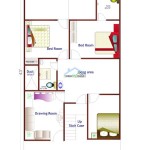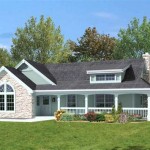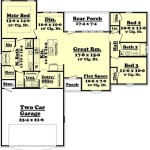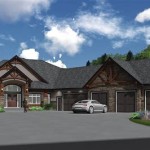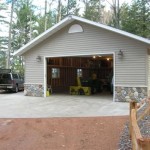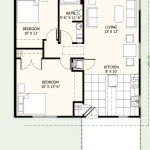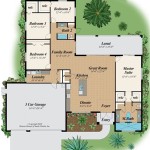Arts & Crafts House Plans: A Journey Through Time and Style
The Arts & Crafts movement, which emerged in the late 19th century, was a design philosophy that emphasized the use of natural materials, simplicity, and handcrafted details. This movement had a significant impact on architecture, and Arts & Crafts house plans continue to inspire homeowners today.
Defining Arts & Crafts House Plans
Arts & Crafts house plans are characterized by their focus on craftsmanship, natural materials, and simplicity. These homes typically feature:
- Steeply pitched roofs with overhanging eaves
- Wide porches with exposed rafters
- Craftsman-style columns and balustrades
- Natural materials such as wood, stone, and brick
- Handcrafted details, such as stained glass windows and decorative woodwork
Historical Roots
The Arts & Crafts movement was a reaction to the mass production and ornamentation of the Victorian era. Designers and architects such as William Morris and Charles R. Ashbee sought to create homes that were both beautiful and functional, using traditional craftsmanship and natural materials. In the United States, the Arts & Crafts movement influenced the work of architects such as Frank Lloyd Wright and Greene and Greene.
Modern Interpretations
While Arts & Crafts house plans have remained popular over time, modern interpretations often incorporate contemporary elements. These homes may feature:
- Open floor plans
- Sustainable materials
- Energy-efficient appliances
- Contemporary furnishings
Benefits of Arts & Crafts House Plans
Choosing an Arts & Crafts house plan offers several benefits:
- Timeless Appeal: Arts & Crafts homes have a classic aesthetic that remains popular over time.
- Craftsmanship: These homes are known for their exceptional craftsmanship and attention to detail.
- Natural Materials: The use of natural materials such as wood, stone, and brick creates a warm and inviting atmosphere.
- Sustainability: Arts & Crafts homes often feature sustainable elements, such as open floor plans and energy-efficient appliances.
Tips for Designing an Arts & Crafts House
When designing an Arts & Crafts house, consider the following tips:
- Emphasize Craftsmanship: Focus on using high-quality materials and traditional techniques.
- Choose Natural Materials: Use wood, stone, and brick to create a warm and inviting atmosphere.
- Incorporate Handcrafted Details: Add decorative woodwork, stained glass windows, and other handcrafted elements to enhance the home's character.
- Consider Sustainability: Incorporate sustainable features such as open floor plans, energy-efficient appliances, and low-maintenance materials.
Conclusion
Arts & Crafts house plans offer a timeless and inviting design aesthetic. Whether you are looking for a historical home or a modern interpretation, these homes provide a unique combination of craftsmanship, simplicity, and natural materials. By following these tips, you can create an Arts & Crafts home that is both beautiful and functional.

Bungalow Floor Plans Style Homes Arts And Crafts Bungalows House Design

Plan 444007gdn Arts And Crafts Style House With Split Bed Layout Craftsman Plans Ranch

Craftsman Style House Plans With Bungalow Features

Craftsman Style House Plans With Bungalow Features

Bungalow Floor Plans Style Homes Arts And Crafts Bungalows Craftsman House

Craftsman Style House Plans With Bungalow Features

Arts And Crafts Style House How To Create The Look

Craftsman Plan 2 730 Square Feet 3 Bedrooms 5 Bathrooms 957 00060

Craftsman Style House Plans With Bungalow Features

Gallery Of Cnad National Art Crafts And Design Center Ramos Castellano Arquitectos 38

